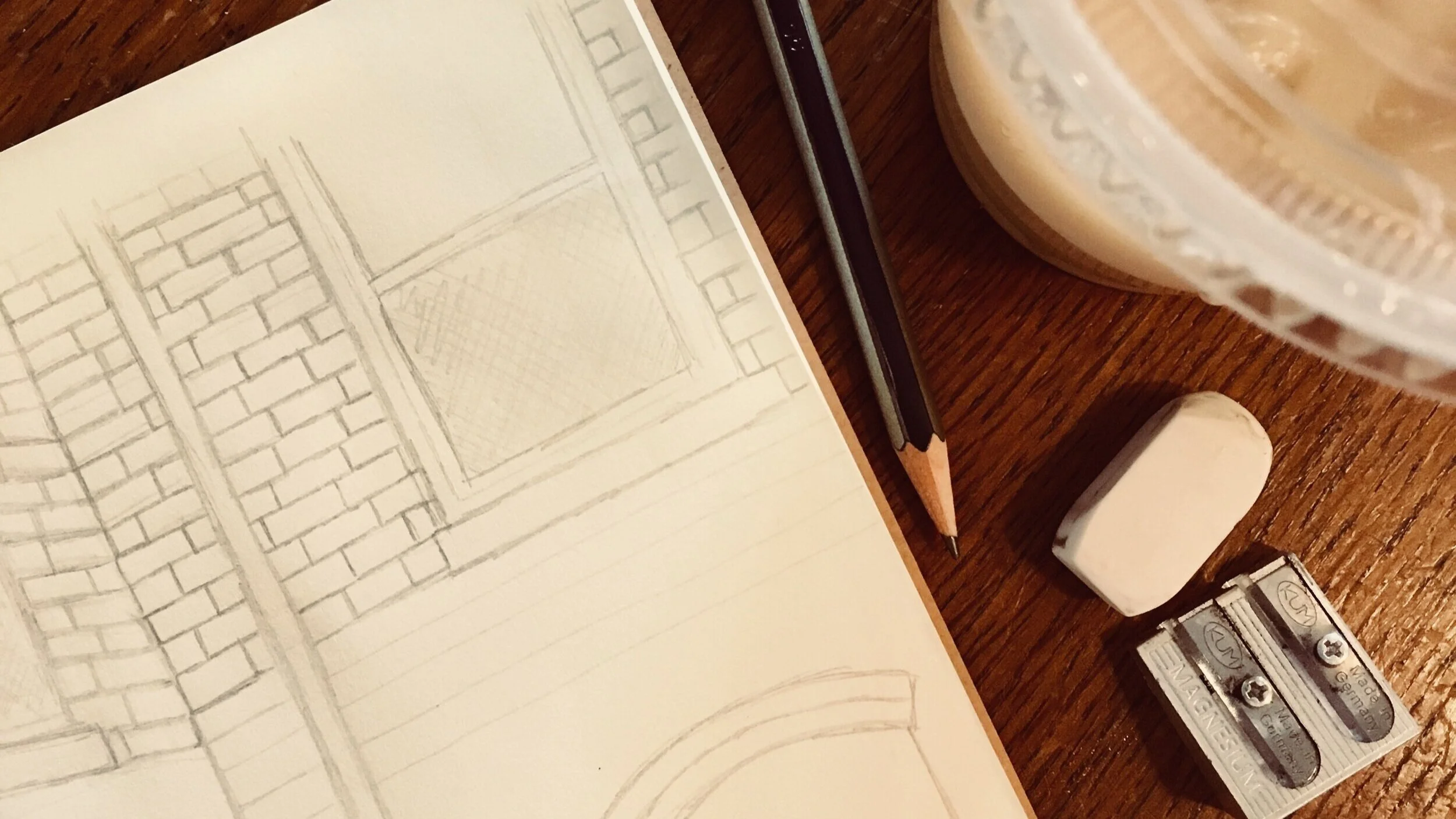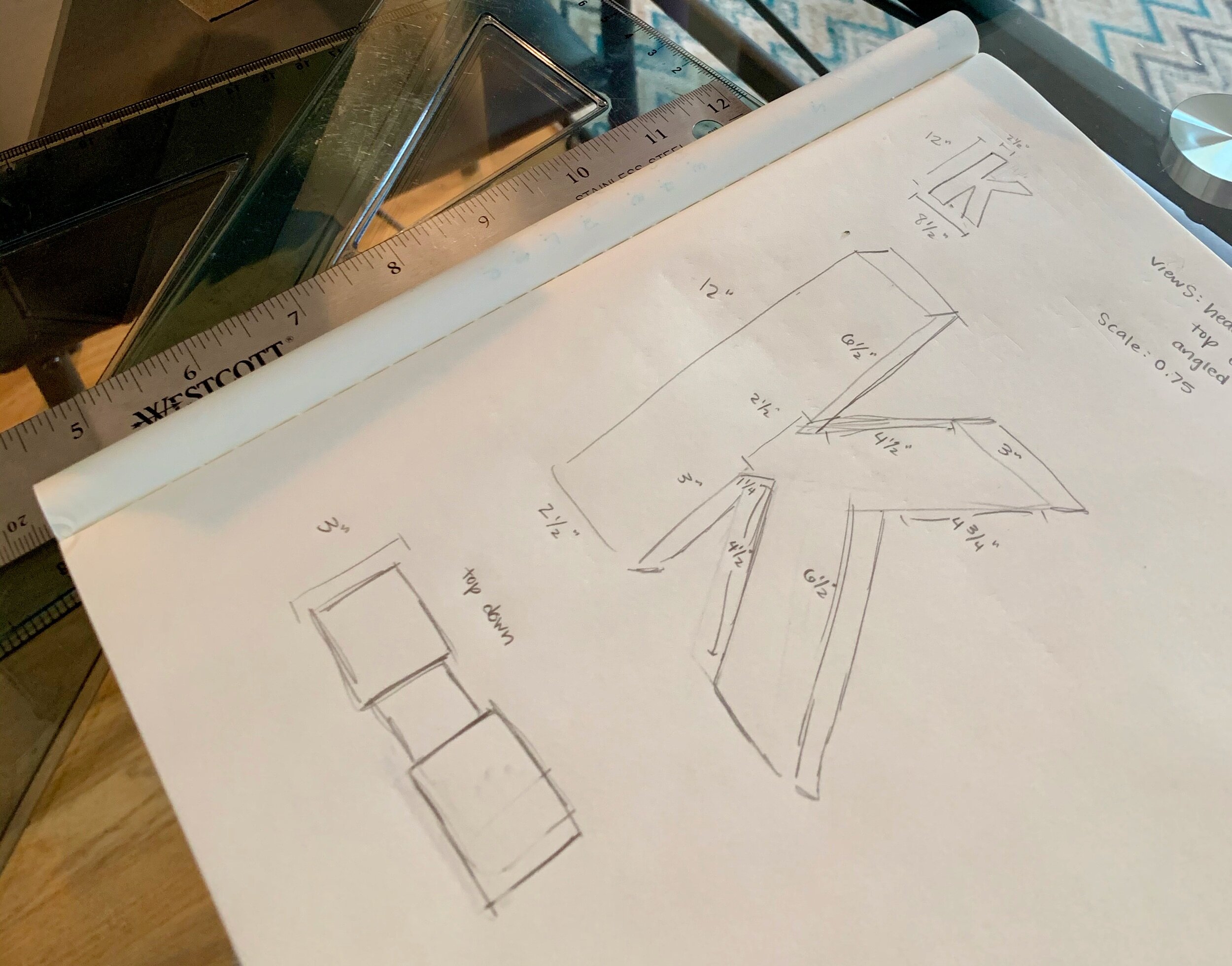Back to the Drawing Board
The literal drawing board, that is. When I took the multiple intelligences quiz, I was confident that I knew exactly what the results would be. Math and I have never had a very good relationship; I hit a wall in calculus my junior year of high school and then avoided even thinking about math for the next four or so years. In college, all my friends were either engineers or programmers and I learned to tune out the conversations I couldn’t participate in. Since I started substitute teaching last year, math has become inescapable. I’ve been in classrooms with students of all ages, K-8, and have had to get comfortable once again with thinking about things like angles, variables, ratios, and fractions.
I scored a 1.87 for the logic/math section of the multiple intelligences quiz. I thought for a long time about what kind of creative challenge I could give myself—I didn’t want to do something that I wouldn’t be invested in. Finally, I thought back to 8th grade. In middle school, I took two quarters of wood shop where I made a metal business card holder, a wooden banana rack, a metal sugar scoop, and (most notably) a trash can basketball hoop. We also spent a good deal of time in that class on drafting. Without going too much into detail, drafting as I knew it was taking a simple object, like a wooden block with cutouts, and drawing it to scale from multiple perspectives. Drafting required precision and perfection, as these documents are used to explain exactly how to build a mechanical structure in the real world. I loved drafting to the point where I finished the assignments so fast that my wood shop teacher had to give me extra ones to do.
I decided that a drafting project would be a great way to remind myself what it is like to think mathematically and it would also be something that I’d hopefully enjoy. The question of what to draw was easy. Last summer, in a typography class, I had to build a 12” tall cardboard letter. So, I gathered my materials and set out to do a precise, mathematical drawing of a lowercase Helvetica ‘k’ (at 0.75 scale, partly to add an extra challenge, and partly so it would fit on the paper I had).
My materials included: a notebook and pencil for calculations, a pad of 9x12 bristol, a 60-30-90 triangle, a 45-45-90 triangle, a large ruler, a mini ruler, a metal clip to hold my paper still, an HB drawing pencil, and an eraser. Not pictured is the calculator on my phone. The first thing I did was sketch out the ‘k’, measure every side, and label my sketch accordingly.
Because I decided to do the drawing at 0.75 scale, the next thing I had to do was multiply every measurement by 0.75. I used the calculator on my phone for this and converted all the resulting decimal points back to fractions. I decided that even though I was drawing the ‘k’ on a smaller scale, I was still going to label it with the actual measurements (because the whole point is for someone to be able to make it themselves based on the drawing). This added another level of confusion because I suddenly had two measurements for each line and had to keep those straight in my head. You’ll see later on in my notes at the end that I wrote the scaled down measurement in blue to remind myself.
Everything was going well until I got to the middle of the ‘k’. I realized I had no idea how to measure the angles of the ‘k’ so that I could tell where lines would meet and what their slope would be. I started frantically texting my boyfriend (a mechanical engineer) asking him how to find an angle measurement. When he responded with a scary-looking equation, I decided there had to be another way. In fact, there was. Using the triangles that I had, I could figure out where the points of intersection were and plot them on my paper almost as if I were graphing them. I did still go back and use the scary equation to find the measurements of the angles at the end, but I was proud of myself for taking a step back and seeing other ways I could continue without finding those intimidating angle measurements.
In one of my Experience Design classes in college, we talked a lot about finding a flow state. You’re considered to be in a flow state while doing an activity if the rest of the world kind of melts away and you’re completely immersed in that activity. I was surprised when I came across the same idea in the chapter on passion in Wired to Create (it even appears in some of the other readings from this week). I definitely found myself in a flow state as I finished my drawings. I ended up with one head-on view of the ‘k’ as well as a top-down view and a bottom-up view. I do have to admit that if I were adhering to drafting best practices, these drawings definitely would have looked different and I probably would have had to do a 3D view in addition. However, I was satisfied with what I came up with for the purposes of the creativity challenge. I also had an impressive notes sheet by the end of the project, that reminded me of the ways that math and logic can be satisfying.
This creativity challenge was enlightening in a number of ways. In particular, it reminded me how engaging projects can be. In school, I struggled with math-based homework assignments and often found myself feeling the same kind of frustration that I felt during the creativity and critical thinking quiz we took last week. However, when math is applied to something that I find interesting or fun, like a drafting project, I am infinitely more invested and much less likely to give up out of frustration. This all ties back to project-based learning for me and makes me want to come up with a good amount of projects for my students that would integrate different subject areas, skills, and content. I think one of the easiest ways to demonstrate learning or understanding is to synthesize different skills and knowledge to create a final product. It’s also probably easier for some students to apply concepts that way because they can see exactly how you might apply those things in the real world.
To me, design thinking is one of the best ways to integrate different skills and knowledge into a classroom project. Design thinking is a concept generally taught to design students in college, but that has started changing recently. It is being applied in high schools, middle schools, and elementary schools because it allows students to become comfortable with things like empathetic problem solving, failure and multiple iterations, improving upon their ideas, etc. It encourages creativity and critical thinking in the context of solving real-world problems and applying those solutions so students can actually see a project through to the execution of a concrete solution. This first creativity challenge has already reinforced the idea that I want to use design thinking in my classroom.
Another idea that struck me from the readings we did this week was the idea of passion. I think that different kinds of projects give students an opportunity to discover things they are passionate about and allows them to try doing things that they might want to continue throughout their lives. Allowing students to come up with their own projects, like we’ve done here, is also something I’ve thought about. I want to give my students these opportunities in the classroom to explore.
Finally, the text Creative Quest reminded me of what it looks like to have a good relationship with creativity. That kind of relationship is one I want my students to be able to develop through my guidance and their own initiative. I’m sure that I’ll never find a perfect balance or perfect set of projects, but I will always keep trying and keep brainstorming because encouraging creativity and critical thinking in the classroom is just so important.
References
Cherry, Kendra. "'Flow' Can Help You Achieve Goals". Verywell Mind, 2020, https://www.verywellmind.com/what-is-flow-2794768.
Kaufman, Scott Barry, and Carolyn Gregoire. Wired To Create. Tarcherperigee, 2016.
Kliphardt, Raymond. "Drafting". Encyclopedia Britannica, 2020, https://www.britannica.com/topic/drafting.
Questlove. Creative Quest. Harpercollins, 2018.






